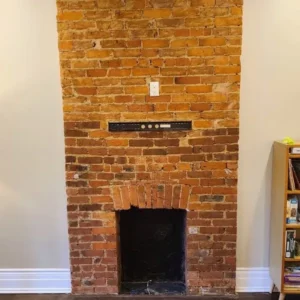Historic brick buildings have timeless charm and craftsmanship that modern construction often lacks. However, preserving this character means knowing how to properly clean and maintain brick surfaces without compromising their integrity. Historic brick cleaning isn’t as straightforward as washing a driveway or patio—it requires care, expertise, and the right techniques. Here’s a practical guide to help you understand what to do (and what not to do) when caring for your home’s historic brickwork.
Why Cleaning Historic Brick is Different
Unlike modern brick, historic bricks were made with different materials and fired at lower temperatures. They often have softer, more porous surfaces that are vulnerable to damage from harsh cleaning methods. Inappropriate cleaning can strip away the brick’s protective outer layer, leading to moisture retention, crumbling, and long-term deterioration.
Preserving historic brick requires a balance of effectiveness and gentleness. The goal is to clean the surface without harming the brick or mortar, ensuring your building retains its historical integrity for years to come.
Do’s: Effective and Safe Cleaning Practices
- Use Gentle Cleaning Solutions
Choose cleaners specifically formulated for masonry. Mild detergents and pH-neutral solutions help lift dirt and grime without damaging the brick’s surface. - Perform a Spot Test
Always test your chosen cleaning method on a small, inconspicuous area before starting the full job. This helps you observe how the brick reacts and avoid unexpected damage. - Use Low-Pressure Washing
High pressure can erode the brick face and mortar joints. Instead, use low-pressure water (below 500 psi) to rinse surfaces gently after applying cleaning agents. - Protect Surrounding Areas
Before starting the cleaning process, cover windows, landscaping, wood, and metal surfaces. This prevents accidental damage from runoff or overspray. - Steam Cleaning
Low-pressure steam cleaning is one of the most effective methods for historic brick. It lifts dirt and stains without harsh chemicals and minimizes moisture saturation, reducing the risk of long-term damage.
Don’ts: Common Mistakes to Avoid
- Avoid High-Pressure Power Washing
Power washing may quickly remove dirt, but it can also strip the brick’s protective facade and cause surface damage that accelerates deterioration. - Do Not Use Non-Masonry Detergents
Avoid general household cleaners, bleach, or acidic products that aren’t specifically designed for masonry. These can stain or chemically weaken the brick. - Never Use Wire Brushes or Harsh Scrubbers
Abrasive tools can gouge the brick and mortar, compromising structural integrity. Use soft brushes or sponges instead. - Refrain from Sandblasting
Sandblasting is extremely aggressive and can permanently damage historic brick. It strips away the kiln-fired outer layer, exposing the porous inner material to moisture and decay.
Additional Considerations for Cleaning Historic Brick
Understanding Efflorescence
This white, powdery residue is caused by water-soluble salts migrating to the surface. While often harmless, efflorescence is a sign of excess moisture. It’s essential to address underlying water issues before cleaning.
Understanding Hydrocarbon Staining
This black or dark soot-like film is caused by atmospheric pollution and coal burning in the 1900s. These staining traps moisture within the brick and is a leading cause of brick deterioration on and in century homes. It is critical that this staining be removed to preserve the integrity of the brick and present its historical beauty with the original look of the bricks.
Managing Biological Growth
Moss, mold, or algae can take root in damp conditions. These should be removed gently using appropriate biological cleaners that won’t harm the brick or mortar.
When Repointing is Necessary
If mortar joints are crumbling or missing, repointing (replacing old mortar) may be required before or after cleaning. Use historically appropriate mortar mixes to maintain authenticity.
When to Call a Professional
If you’re unsure about your brick’s condition or the best way to clean it, consult a professional. Historic masonry experts understand the nuances of brick types, environmental factors, and safe cleaning techniques. They can assess damage, recommend tailored solutions, and carry out restoration without compromising your building’s character.
Remember: improper cleaning can cause irreversible harm. When in doubt, trust experienced professionals to preserve the beauty and integrity of your historic home.



